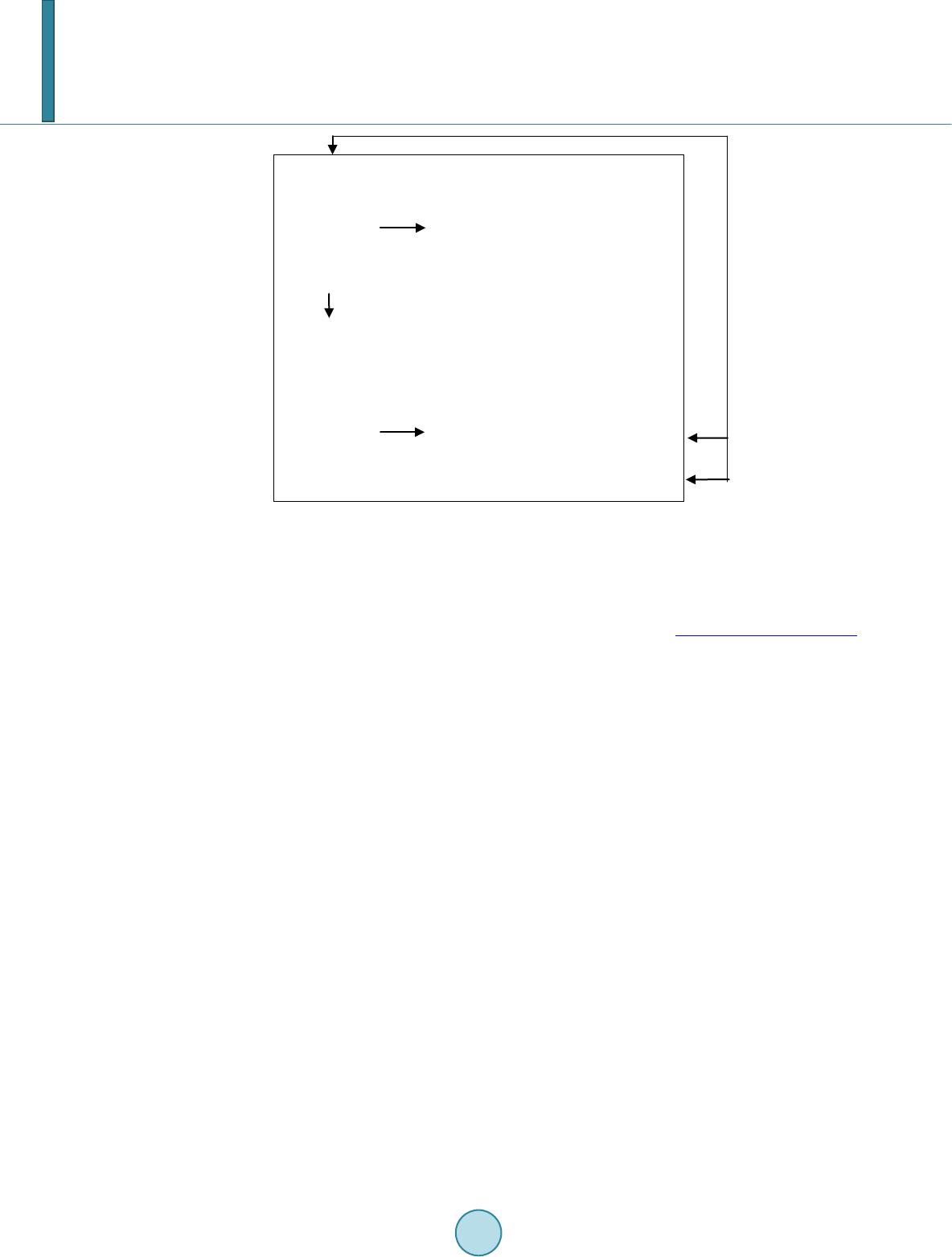 Open Access Open Journal of Social Sciences, 2014, 2, 38-46 Published Online February 2014 in SciRes. http://www.scirp.org/journal/jss http://dx.doi.org/10.4236/jss.2014.22006 How to cite this paper Alharthi, G.W., et al. (2014) Designing Learning Objects for a Computer Science Course: Are There Any Effects on Developing Practical Skills and Professional Interests among Students of Computer Department, Faculty of Edu- cation, University of Dammam? Open Journal of Social Sciences, 2, 38-46. http://dx.doi.org/10.4236/jss.2014.22006 Designing Learning Objects for a Computer Science Course: Are There Any Effects on Developing Practical Skills and Professional Interests among Students of Computer Department, Faculty of Education, University of Dammam? Ghadeer W. Alharthi1, Abdellatif E. Elgazzar1,2, Ahmed M. Nouby1,3 1Distance Teaching and Training Program, Arabian Gulf University, Manama, Kingdom of Bahrain 2Department of Instructional Technology and Information, Ain Shams University, Cairo, Egypt 3Department of Curriculum and Instruction, College of Education, Suez Canal University, Ismailia, Egypt Email: rareflower111@hotmail.com, dr.a_latif@hotmail.com, ahmednouby2005@yahoo.com Received October 2013 Abstract This research aims at investigating the effectiveness of Designing Learning Objects for the Course “Basics of Communications and Networks” according to Wiley’s Model on Developing Practical Skills(PS) and Professional Interests(PI) among Students of Computer Department, Faculty of Education at Jubail, University of Dammam, KSA to get the answer to the major question: Are there any effects on developing practical skills and professional Interests? The research implemented the experimental research method in a quasi-experimental control group with pretest-posttest design. The sample was purposive one, consisted of (54) subjects from two sections of female stu- dents of those enrolled in the course during the first semester of the year 2012-2013 in the Faculty of Education at Jubail. The two sections were randomly assigned to the two groups: experimental group (27) and control group (27) students. Two research hypotheses were formulated to answer the major question. The Course “Basics of Communications and Networks” was developed using eLearning Objects (LO) according to Wiley’s Model through a practical/or operational model, and then refereed. Two research tools: Observation Checklists of practical skills (OCPS), and Profes- sional Interests Test (PIT) were developed and validated thru refereeing. The experimental group learned through the eLearning Objects Design (Treatment) of the course while the control group learned through the regular teaching method of that course. The two research tools: OCPS and PIT were implemented before and after the experiment for both groups. Data were processed and then analyzed using SPSS package and the two hypotheses were tested. Results showed a statisti- cally significant difference between the two means of the experimental group and the control group for the experimental group in OCPS for the experimental group, while there was no statisti- cally significant difference between the two means in PIT. So, the answer of the major question:  G. W. Alharthi et al. that there were Effects of designing eLearning Objects on Developing Practical Skills, while no ef- fects on developing Professional Interests among Students of Computer Department, Faculty of Education. Some recommendations as well as some suggestions for future research, based on this research results were provided. Keywords Designing Learning Objects; Wiley’s Model; e-Learning; Practical Performance Skills; Professional Interests; University e-Course 1. Introduction Educational technology (ET) is growing very fast as a respond to newly e-learning resources, Learning Man- agement Systems (LMS), Learning Content Management Systems (LCMS), and web technologies. Such devel- opments have led researcher and developer of the ET field to be directed towards investigating design issues of eLearning for education and training in school levels, higher education, and universities levels. So, the interest in research and development increased on the design of learning objects as small components that build eLearn- ing systems under SCORM standards. This research goes with these directions investigating the effectiveness of Designing Learning Objects for a computer science course according to Wiley’s Model (2000) on developing practical skills (PS) and professional interests (PI)” among Students of Computer Department, Faculty of Edu- cation at Jubail, University of Dammam, KSA to get the answer to the major question: Are there any effects on developing practical skills and professional interests?. Learning objects (LO) are defined as micro electronic learning resources or units of digital forms which de- signed for specific learning outcomes/instructional objectives, which can be shared and used in many other learning systems, methods, strategies, training, and tutorials. Learning Objects may take the form of texts, vid- eos, audio, digital images of fixed or mobile, Web applications, and interactive simulation models [1-5]. The In- stitute of Electrical and Electronics Engineers [6] defines the learning object as “any entity, digital or nondigital can be used and reused throughout the technology to support learning, such as: systems, computer-based training, and learning environments, interactive systems and teaching intelligent computerized tutoring systems, distance learning systems, and collaborative learning environments. Learning objects usually have metadata to enable searching for them through learning management systems and to be used by beneficiaries, to be developed by designers and developers, or to be available at any time via the Internet. Using learning objects should be based on a clearly defined learning strategy or instructional events process to bring about learning outcomes. Learning objects should be interoperable in the sense that operate across platforms and different delivery systems and can be utilized by multiple development tools to be built or assembled in order to establish courses or training ses- sions. Also, learning objects should be flexible so they can be easily updated to provide quality teaching and high quality learning resources with multiple accesses of them to a wide range of learners. 1.1. Designing Learning Objects According to Wiley’s Model Based on reviewing some studies [1,7-9], the authors of this research have got into crucial idea that there is a need to investigate designing learning objects based on sound models such as Willy’s model (2000) in solving practical educational problems in a university level of education. Based on initial probing for problems asso- ciated with any university courses, the first author came up with the Communications and Networks Fundamen- tals’ Course in which students have problems in achieving its practical skills and have low professional interests in future professional work. And the challenge was coming up with a strategy based on Wiley’s Model (2000). Authors agreed on implementing Wiley’s own LODAS strategy for designing learning objects for that computer science course as a beginning step for future research on developing new strategies through developmental re- search. The application of LODAS strategy has two major steps: firstly, determining the conditions for its ap- plication, and secondly, following LODAS’ methods. So, the authors developed what can be called a practical model for applying Wiley’s LODAS strategy. The model consisted of two major steps. The first major step is  G. W. Alharthi et al. the condition for application that includes the following sub-steps: Determine type of content, conditions of learning environment, determine learners’ characteristics, determine instructor characteristics, and conditions for implementing LODAS. The second major step is the LODAS methods that include the following sub-steps: de- termine appropriateness and preliminary activities, analyze and synthesize content, apply design practice and information presentation, select/or design learning objects, design learning objects’ sequencing, and loop back for quality improvement. As a reflection, this practical or operational model of Wiley’s LODAS strategy seems to be aiming at quality design of learning objects for use in an eCourse or training programs. However, quality and effectiveness of designing learning objects are not guaranteed without empirical evidences. So, researches are still needed to provide such evidences. This research was directed towards giving a partial evidence of im- plementing Wiley’s LODAS model to solve some problems and difficulties facing a university computer science course which is “communications and networks fundamentals”. 1.2. Research Problem Statement and Questions The research problem can be stated as “there were weaknesses among the students at Computer Department, Faculty of Education at Jubail, University of Dammam, KSA in the course entitled “Communications and Net- works Fundamentals” in achieving its practical skills and have low level of professional interests towards their future professional work as teachers of computer science, and there is a need to investigate the effects of de- signing learning objects for this course according to Wiley’s model on developing practical skills(PS) and pro- fessional interests (PI). So, the main question was proposed to be answered: Are there any effects of designing Learning objects for this course according to Wiley’s model on developing practical skills and professional in- terests? This main question was analyzed into the following sub-questions: 1) Are there any Effects of designing learning objects for this course according to Wiley’s model on develop- ing practical skills (PS) as compared to regular teaching method of that course? 2) Are there any Effects of designing learning objects for this course according to Wiley’s model on develop- ing professional interests (PI) as compared to regular teaching method of that course? 1.3. Research Hypotheses Authors formulated two research hypotheses: Hypothesis (1): There is a significant difference at level (α = 0.05) between the two means of the experimen- tal and control in posttest scores of Observation Checklists of Practical Skills (OCPS) for the experimental group when controlling the pretest of OCPS scores. Hypothesis (2): There is a significant difference at level (α = 0.05) between the two means of the experimen- tal and control in posttest scores of Professional Interests (PIT) for the experimental group when controlling the pretest of PIT scores. 2. Research Procedures Research procedures included carrying out the following steps: 2.1. Practical Skills of the Course Authors started with conducting content analysis of the intended course “Communications and Networks Fun- damentals” within the delimitations of this research to informatics’ soft skills. The 1st author did this analysis and came up with a preliminary list of basic practical skills and sub-skills. The final refereed list of skills con- sisted of (10) basic practical skills and (148) sub skills. This list was used later on in developing the Observation Checklists of practical skills (OCPS) in the research tools section. 2.2. Developing the Learning Objects Treatment According to Wiley’s Model A very lengthy detail of developmental tasks was done on applying Wiley’s model (2000) for the Design of learning objects for the Computer Science Course through the developed practical or operational model (see Figure 1). The model consisted of two major steps. The first step is the condition for application. The 1st author  G. W. Alharthi et al. Groups (G) N Pretest (O) Treatment (X) Posttest (O) Experimental Group 27 Pretest of: OCPS and PIT Learning objects treatment Posttest of: OCPS and PIT Control Group 27 Regular teaching Figure 1. The one control group qusi-experimental design. carried out all of determined types of content, conditions of learning environment, determine learners’ characte- ristics, determine instructor characteristics, and conditions for implementing LODAS. Then applying the second major step, which is the LODAS method. The following sub-steps were applied: determining appropriateness and preliminary activities, analyze and synthesize content, apply design practice and information presentation, select/or design learning objects, design learning objects’ sequencing, and loop back for quality improvement. In production of learning objects treatment, 1st author developed an eLearning environment based on inputs from the two major steps as web pages using the following tools: Photoshop (CS3) for the design of the page header (Banner), matching icons and background website. Dreamweaver was used for the development of static web pages, Site Map, goals, map of content, and sources. JavaScript Programming language was used to develop the page that contains the electronic communication tool (contact us). PHP Programming language was used to de- velop the login page, page metadata, content page. Learning objects repository databases were developed through MySql language. JavaAjax Language was used to create a search box for learning objects through their metadata contained in the repository so that it can be displayed in the content page. At this stage, a guide to the website in a file in the (PDF) format was created. This guide directs learners through the learning process through learning objects as well as how to use the contents of the eLearning environment. Then, the contents of the educational web page were successfully uploaded to the website (WWW.NTLESSONS.COM) on the host server. Authors assured that all laboratories’ computers were connected to the Internet and operating properly so that it meets the requirements of surfing that educational website. After successful testing of this produced pro- totype of designing learning objects according to Wiley’s model, this prototype was ready for evaluation in the evaluation, the prototype of designing learning objects according Wiley’s model was refereed by our colleagues in Distance Teaching and Training Program at Arabian Gulf University and approved after some modifications. By then, the experimental treatment (designing learning objects according Wiley’s model for the course) fully developed was ready for research experiment. 2.3. Research Tools Two research tools were developed: 1) Observation Checklist of practical Skills OCPS. This OCPS was developed to measure the final refereed list that consisted of (10) basic practical skills and (148) observed sub skills as mentioned earlier in Section (1). This OCPS was refereed and validated for use in the research. (2) Professional Interests Test (PIT) was devel- oped and validated through refereeing by a committee of experts. Both the research tools had acceptable Cron- bach’s Alpha (α) of internal consistency and reliability. Then, these two research tools were ready to be imple- mented in the research experiment. 2.4. Participant and Research Sample The research sample was a purposive sample. The sample was consisted of (54) subjects from two sections of female students of those enrolled in the course Communication and Networks Fundamentals during the first semester of the year 2012-2013 in the Faculty of Education at Jubail. The two sections were randomly assigned to two groups: experimental group (27) and control group (27) of female students. 2.5. Research Method and Experimental Design The experimental research method was used and the one control group with pretest-posttest Quasi-Experimental Design was used. So, pretests and posttests of both OCPS and PIT were implemented as shown in Figure 2 of the experimental design.  G. W. Alharthi et al. Condition for application Determining types of content, Conditions of learning environment Determine learners’ characteristics Determine instructor characteristics, Conditions for implementing LODAS LODAS methods Determine appropriateness and preliminary activities, Analyze and synthesize content, Apply design practice and information presentation, Select/or design learning objects, Design learning objects’ sequencing, Loop back for quality improvement Figure 2. A practical/or operational model for Wiley’s model (2000) of the LODAS strategy. 2.6. Research Experiment Research experiment was implemented according to the mentioned experimental design. The experimental group studied the course online using learning objects from accessing the website (WWW.NTLESSONS.COM), while the control group studied the same course using conventional method of teaching through lectures and labs. Both the Observation Checklist of practical Skills OCPS and the Professional Interests Test (PIT) were im- plemented pre and post the experimentation. Data were collected from these two research tools and organized to be ready for analyses to test research hypotheses. 3. Research Results 3.1. Descriptive Statistics Descriptive statistics were calculated using SPSS package for both dependent variables to both research groups in both pretest and posttest administrations. So, arithmetic means and standard deviations in the administrations of the observation checklists of practical skills OCPS and professional interests test PIT in both pretesting and posttesting of the two groups: control and experimental groups were calculated (see Table 1). It can be noticed from this table that the mean scores of the two groups of pretest scores of the OCPS aren’t close, since the mean of the experimental group (21.89), while the mean of the control group of (36.59). It is clear that the two means are unequal in the pretest scores of OCPS. So, the One-Way ANCOVA was used to control for this difference. On the other hand, the two arithmetic means of the post application of the OCPS scores of the two groups (control and experimental), they are shown in Table 1, the mean of the experimental group is (290.15) while the mean of scores of the control group is (247.81) in the post application of OCPS. So, the mean of OCPS of the experimental group who studied the Communications and Networks Fundamentals course through learning ob- jects treatment is higher than the mean of OCPS among the control group. This observable difference between the two means is about (6) and it might be significant. This is going to be tested while testing Hypothesis (1). The means and standard deviations of the professional interests test (PIT) for the pretest application and post- test application were also calculated as output of SPSS for groups (control and experimental), and results are shown in Table 1. The means of the two groups (experimental and control) are close, since mean of the experi- mental group (121.67) while the mean of the control group reached (119.48). The difference is about (2) scores, thus the two groups were homogeneous groups in the pretest application for PIT and their standard deviation  G. W. Alharthi et al. Table 1. Means and standard deviations for the two groups of research variables. Research variables Research groups Experimental N = 27 Control N = 27 Mean Standard deviation Mean Standard deviation Posttest of OCPS 290.15 5.45 284.40 6.55 Pretest of OCPS 21.89 28.15 36.59 38.54 Posttest of PIT 124.11 13.88 124.41 15.19 Pretest of PIT 121.67 14.35 119.48 15.04 Gain of OCPS 268.26 28.67 247.81 39.60 Gain of PIT 2.44 12.80 4.93 7.41 was also very close to each other. On the other hand, as it can be seen from Table 1 that the two mean scores of the two groups (experimental and control) in the posttest application of the PIT are almost the same. The mean score of the posttest application of PIT of the experimental group (124.11), while the mean score of the control group was (124.40). This means that there was no big effect of the learning objects treatment in the experimental group on PIT as compared with the control group. So, there was no observed difference between the two means of PIT posttest scores between the experimental group and the control group. However, the significance of this difference is going to be tested by using the One-Way ANCOVA to control for the pretest scores when testing Hypothesis (2). 3.2. Hypotheses Testing Hypothesis (1): There is a significant difference at level (α = 0.05) between the two means of the experimental group and control group in posttest scores of OCPS for the experimental group when controlling the pretest scores of OCPS. To test Hypothesis (1), the authors applied the One-Way ANCOVA statistical procedure to test the difference between the two groups in posttest scores of OCPS when controlling the pretest scores of OCPS as covariate. Results of the One-Way ANCOVA results of posttest of OCPS with pretests of OCPS as covariate is shown in Table 2. From Table 2, the value of (F) of the Between Groups Source of Variance, F(1, 51) is (10.99 which is significant at significant level (α = 0.05), since the calculated Sig.(0.00) < (α = 0.05). This means that the null Hypothesis is rejected and the alternative Hypothesis (1) is accepted. This means that there is a significant dif- ference at level (α = 0.05) between the two means of the experimental group and control group in posttest scores of OCPS for the experimental group when controlling the pretest scores of OCPS. So, the experimental group who studied the course through the experimental learning objects treatment is superior to the control group which studied the same course “Communications and Networks Fundamentals” through the traditional method. Hypothesis (2): There is a significant difference at level (α = 0.05) between the two means of the experimen- tal and control in posttest scores of PIT for the experimental group when controlling the pretest scores of PIT. To test Hypothesis (1), the authors applied the One-Way ANCOVA statistical procedure to test the difference between the two groups in posttest scores of PIT when controlling the pretest scores of PIT as a covariate. Re- sults of the One-Way ANCOVA results of posttest of PIT with pretests of PIT as covariate are shown in Table 3. From Table 3, the value of (F) of the Between Groups Source of Variance, F(1, 51) is (0.51) which isn’t signif- icant at significant level (α = 0.05), since the calculated Sig.(0.48) > (α = 0.05). This means that the null Hypo- thesis can’t be rejected and the alternative Hypothesis (2) is not accepted. This means that there is no significant difference at level (α = 0.05) between the two means of the experimental group and control group in posttest scores of PIT for the experimental group when controlling the pretest scores of PIT. So, the experimental group who studied the course through the experimental learning objects treatment isn’t superior to the control group which studied the same course “Communications and Networks Fundamentals” through the traditional method in developing professional interests.  G. W. Alharthi et al. Table 2. One-way ANCOVA results of posttest of OCPS with pretests of OCPS as covariate. Source of variance Sum of squares df Mean squares F value Sig. Pretest of OCPS 4.41 1 4.41 0.12 0.73 Between Groups 405.48 1 405.48 10.99 0.00 Error 1881.52 51 36.89 Total 4458871.00 54 Table 3. One-way ANCOVA results of posttest of PIT with pretest of PIT as covariate. Source of variance Sum of squares df Mean squares F value Sig. Pretest of PIT 6104.09 1 6104.09 63.42 .00 Between Groups 48.83 1 48.83 0.51 .48 Error 4909.09 51 96.26 Total 844794.00 54 4. Discussions and Interpretations Although the two groups weren’t equal in their means of the scores of the pretest application the OCPS for the benefit of the control group, the result of testing Hypothesis (1) as it was presented above using One-Way ANCOVA resulted in a statistically significant difference between the two groups in posttest application of OCPS at significance level less than (0.05) in the course “Communications and Networks Fundamentals” for the experimental group. This clearly shows that learning objects treatment of this course is effective on developing practical skills in favor of the experimental group after excluding the impact of the pretest application of OCPS. This result was also correct when the two means of the gain scores (posttest-pretest) were compared using in- dependent (t) test, which showed a statistically significant difference between groups at the level of significance at (0.05) in favor of the experimental group. This also means that the use of learning objects designed according to Wiley’s model has a great positive effect on the acquisition of practical skills this course. Besides the calcu- lated size of effect from (t) resulted in Eita square has the value (0.19), the authors attribute this result to the some factors in designing learning objects such as: 1) Learning objects may have provided meaningful learning experiences to female students in the experimental group. 2) The LODAS strategy for sequencing learning ob- jects and organization in the form of a content map or in the repository led learners in the experimental group to participate actively in the learning process through the experimental treatment. 3) The right implementation of the operational model of LODAS in developing the treatment for the experimental group (see Figure 1). 4) Each learning object includes an introduction to activate the structure of knowledge and skills to female students in the experimental group that linked to their previous experiences before this course from other courses. 5) Each learning object in the treatment was designed and produced in according standards. 6) The correct assembling and sequencing of learning objects since most of these learning objects were developed to the course without much importing from outside repositories. And finally, 7) metadata of learning objects were enough and clear to students in the experimental group that enhanced active and self-learning to them. Moreover, the design of learning objects as being attractive, interesting, and interactive multimedia might have fitted most of students’ learning styles and contributed to raising their motivation in the learning process. With regard to developing of Professional Interests (PI), the results of testing Hypothesis (2) as it has been presented earlier through applying the One-Way ANCOVA showed a statistically not significant difference be- tween the two means of the two groups in the application of the posttest of PIT while excluding the effect of pretest scores of PIT as a covariate. This revealed that there were no statistically significant differences between the mean scores of the experimental group and the mean scores of the control group. This means that designing learning objects according to the Wiley’s model has no effect on the development of professional interests (PI) towards their future professional work as teachers of computer science. Comparing the two means of gain scores of PIT also showed no significant difference between the two means the experimental group and the control  G. W. Alharthi et al. group. That was expected since the mean scores of pretest application of PIT as well as the posttest application of PIT were so close in the two groups (see Table 1). This lack of significant difference between the two means of the control group and the experimental group in developing professional interests may be attributed to some factors that include but not limited to: 1) Improving professional interests may not be resulted from studying a single course as “Communications and Networks Fundamentals” course regardless the designed treatment. 2) Improving professional interests may need longer times more than the time spent during the current research experiment of a few weeks. 3) Professional interests may have been affected by female students’ general low interests towards their future teaching profession. This factor may suggest that professional interests may be im- proved if these female students future profession from this Computer Science Department is going to be infor- mation technology professionals (IT). 4) Professional interests are sub-class of interests growing very slow, as research reported, at the age period between 20 years and 24 years. 5) This result may be attributed to the fact that the content of the treatment was heavily centered on practical skills more than on the professional issues and the emotional side of learning. And finally, 6) this may attribute to the fact that participants were female stu- dent teachers. It is expected that this result may be altered if research sample is getting large enough and to in- clude male student teachers of computer science. 5. General Conclusions Authors have reached some general conclusions out of this research results that the answer of the major question is that there are effects of designing learning objects on developing practical Skills, while no effects on devel- oping professional interests among female student teachers of Computer Science Department, Faculty of Educa- tion. This means that designing learning objects for this course is effective probably because these skills are mostly informatics’ soft skills. This type of skills should be subjected to a considerable amount of research in order to develop new design and learning theories that enable us to develop eLearning environments, knowledge, and predictions. It is appropriate here to make some out of this research results. It is recommended that: 1) Using this developed learning objects treatment and repository in improving the course “Communications and Net- works Fundamentals” and similar university courses. 2) Integration of learning objects in traditional teaching to make suitable blended learning environment to take advantage of it to build knowledge and to develop perfor- mance skills. 3) Encouraging efforts of developing digital repository of learning objects for all universities and higher education. And, 5) encouraging developers and teachers to implement the operational model of Wiley’s strategy of LODAS followed in this research (see Figure 1). Some future researches can be also suggested that may includes: 1) Expanding research sampling to include both female student teachers as well as male student teacher and other learning outcomes and other higher education eCourses. 2) Research on different design va- riables of designing learning objects such as color, dimension, sequencing, assembling, type of learner control, student selection versus teacher selection, and etc. 3) Research is needed to include learner characteristics as moderate variables and investigating their interaction with learning objects’ design strategies on specific learn- ing outcomes in different contexts. And finally, 4) Developmental researches are also needed to develop eLearning environments of learning objects for developing affective learning outcomes such as interests, atti- tudes, and motivation. Acknowledgements This research has been done as a part of King Hamad Academic Chair of eLearning activities, Arabian Gulf University. Authors are deeply give special thanks to Arabian Gulf University for supporting them to attend the CITE 2014. References [1] Bailey, W. (2005) What is adl scorm? http://zope.cetis.ac.uk/lib/media/WhatIsScorm2_web.pdf [2] Dick, W., Carey, L. and Carey, J. (2009) The systematic design of instruction. 7th Edition, Pearson Higher Education Inc., Upper Saddle River, NJ, USA. [3] El-Gazzar, A.-L.E. (2002) Effectiveness of using multimedia computer assisted instruction on acquision of some levels of learning of scientific concepts according to Frayer’s Model of Concepts’ evaluation. Journal of Education, Scientific  G. W. Alharthi et al. Refereed Journal, Faculty of Education, Al-Azhar University, Cairo, 155, 37-83. [4] Frosch-Wilke, D. (2004) An extended and adaptable information model for learning objects. Proceedings of IEEE In- ternational Conference on Advanced Learning Technologies (ICALT'04), 30 August-1 September 2004, 166-170. [5] IEEE Institute of Electrical and Electronics Engineers (2001) IEEE standard for software user documentation. IEEE Computer Society, United States of America. [6] Kay, H. and Knaack, L. (2008) Examining the impact of learning objects in secondary school. http://dx.doi.org/10.1111/j.1365- 2729.2008.00278.x [7] Nouby, A.M. (2009) The effectiveness of the design of learning objects for blended learning on achievement and in- terests among students of the faculty of medicine at the Arabian Gulf University. Journal of Instructional Technology, Egyptian Association of Educational Technology, 4, 153-156. [8] Reece, A. (2009) A reusable learning object design model for elementary mathematics. PhD Thesis, Capella University, Florida, USA. http://www.e-novalia.com/materiales/RLOW__07_03.pdf [9] Stamey, J. (2006) A comparison of the performance of undergraduate statistics students using intelligent learning ob- jects versus those receiving traditional classroom instruction. PhD Thesis, North Carolina State University, USA. http://search.proquest.com/.(3,233,063) [10] Turel, Y. and Gurol, M. (2011) A comprehensive evaluation of learning objects-enriched instructional environments in science classes. Contemporary Educational Technology, 15, 264-281. [11] Wiley, D. (2000) Learning object design and sequencing theory. PhD Thesis, Brigham Young University, USA.
|